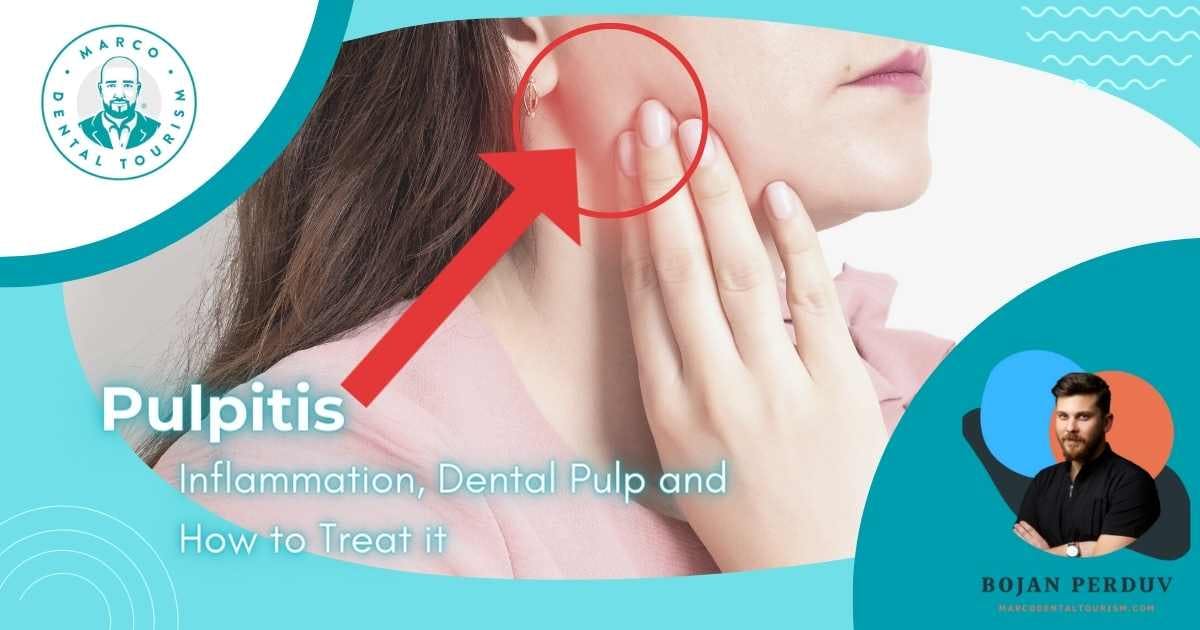Pulpitis: Inflammation, Dental Pulp and How to Treat it



Have you ever heard of pulpitis - a very painful inflammation of the dental pulp that can often cause immense discomfort and lead to long-term damage to your teeth? In this blog, we investigate exactly this dental problem, and you will find out all the necessary information in order to be informed and take preventive care of the health of your teeth! From dental hygiene and proper oral care, to the causes, symptoms and treatment of dental pulpitis, we'll provide the comprehensive knowledge you need to maintain your perfect Hollywood smile. Stay tuned, we're getting started!
Dental pulpitis is a severe inflammation of the dental pulp, the soft tissue in the center of the tooth that contains nerves, blood vessels and other connective tissues. Dental pulpitis is usually caused by caries, an injury or a certain infection, which, if left untreated, can lead to severe pain or even tooth loss.

Pulpitis occurs when the tooth nerve is exposed to a bacterial infection. The infection is most often caused by deep caries, a cracked tooth or dental trauma. The bacteria that cause the infection travel to the pulp, leading to inflammation and pain. In order to prevent further damage, prompt treatment is necessary.

Symptoms of dental pulpitis include increased sensitivity to hot and cold, throbbing, painful and sensitive gums. In some cases, a bad taste in the mouth, fever, and bad breath can also occur. In more severe cases, untreated dental pulpitis can lead to an abscess or purulent inflammation of the gums.
Here are a few more ways in which inflammation of the dental pulp can manifest itself:

The diagnosis of dental pulpitis is established by a complete dental examination, an X-ray, as well as a pulp vitality test. An X-ray helps to assess the extent of infection, while a vitality test assesses the response of nerve tissue to a specific stimulus. Accurate diagnosis is the key to successful treatment.

Dental pulpitis is most often treated with root canal treatment. This procedure involves removing the infected and inflamed pulp tissue, as well as cleaning, shaping and filling the inside of the tooth to prevent further infection. This helps reduce pain and restore normal tooth function.
No, tooth extraction is not always necessary due to pulpitis! In most cases, root canal therapy can successfully eliminate the infection and save the tooth. However, in more severe cases, when root canal therapy is not sufficient, tooth extraction is recommended to prevent further dental disease.

The best way to prevent pulpitis is oral hygiene. Daily brushing, flossing and regular visits to the dentist help remove bacteria that cause inflammation and infection in the pulp. If you have any dental problems, make sure you get them treated regularly to minimize any risk.
In addition to proper care and hygiene, pulpitis, as well as other diseases of the mouth and teeth, can be successfully prevented by:

It's no secret that dental pulpitis can be incredibly painful and unpleasant. However, it is also important to remember that this condition is very successfully treatable. With early diagnosis and the right treatment, you can make your teeth completely healthy again in a short period of time. We will remind you that the key to the successful treatment of dental pulpitis lies in being proactive. If you feel sharp pain or discomfort in the affected tooth, visit your dentist as soon as possible. Your doctor will be able to assess the severity of the problem and recommend the most appropriate treatment to help you feel better as soon as possible. With the right knowledge and care, you can ensure that your teeth and gums stay healthy and strong, giving you the perfect Hollywood smile.

Schedule a consultation, and Marco will get back to you as soon as possible!
Share your opinion!
What do you think about this topic?
Comments (0)